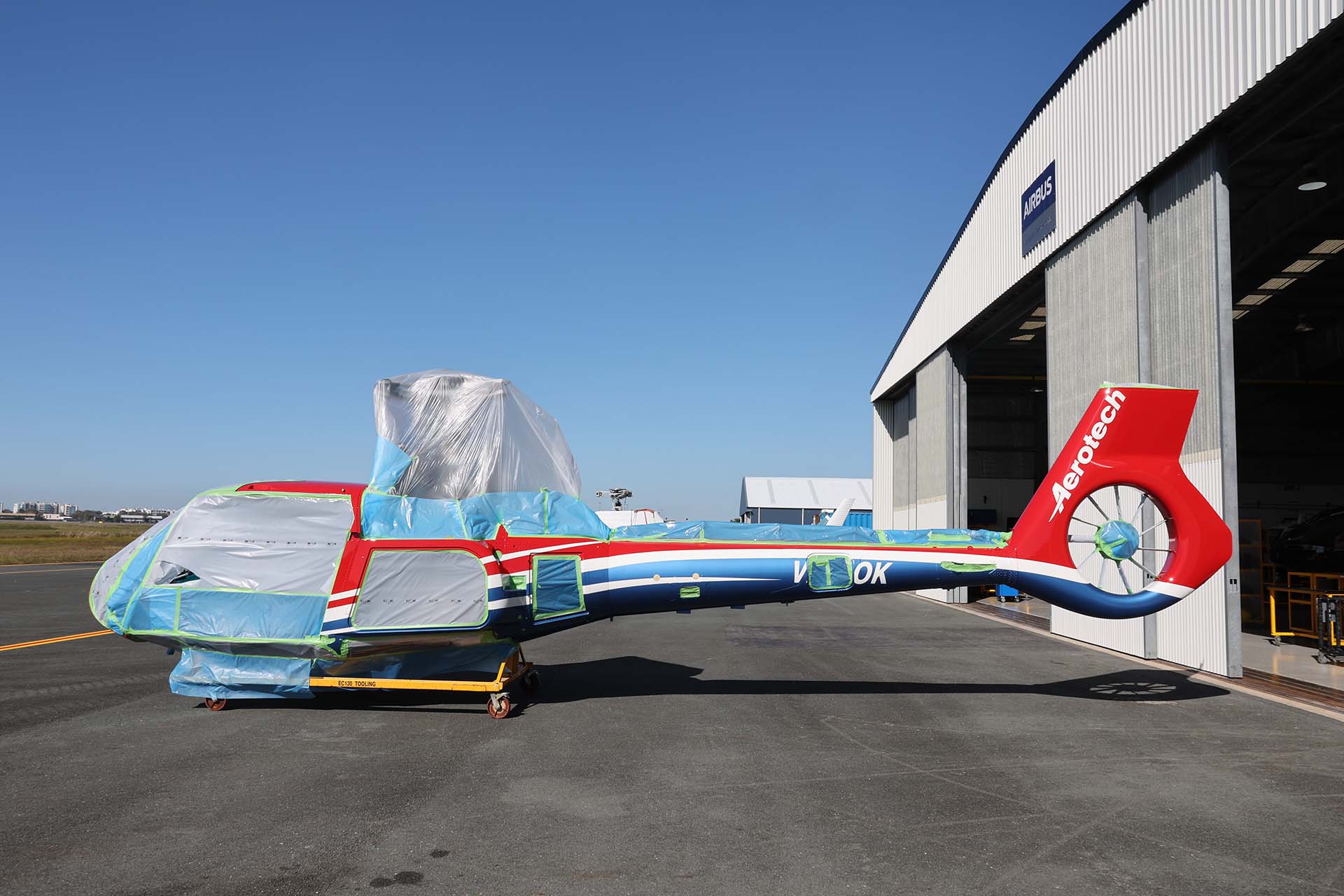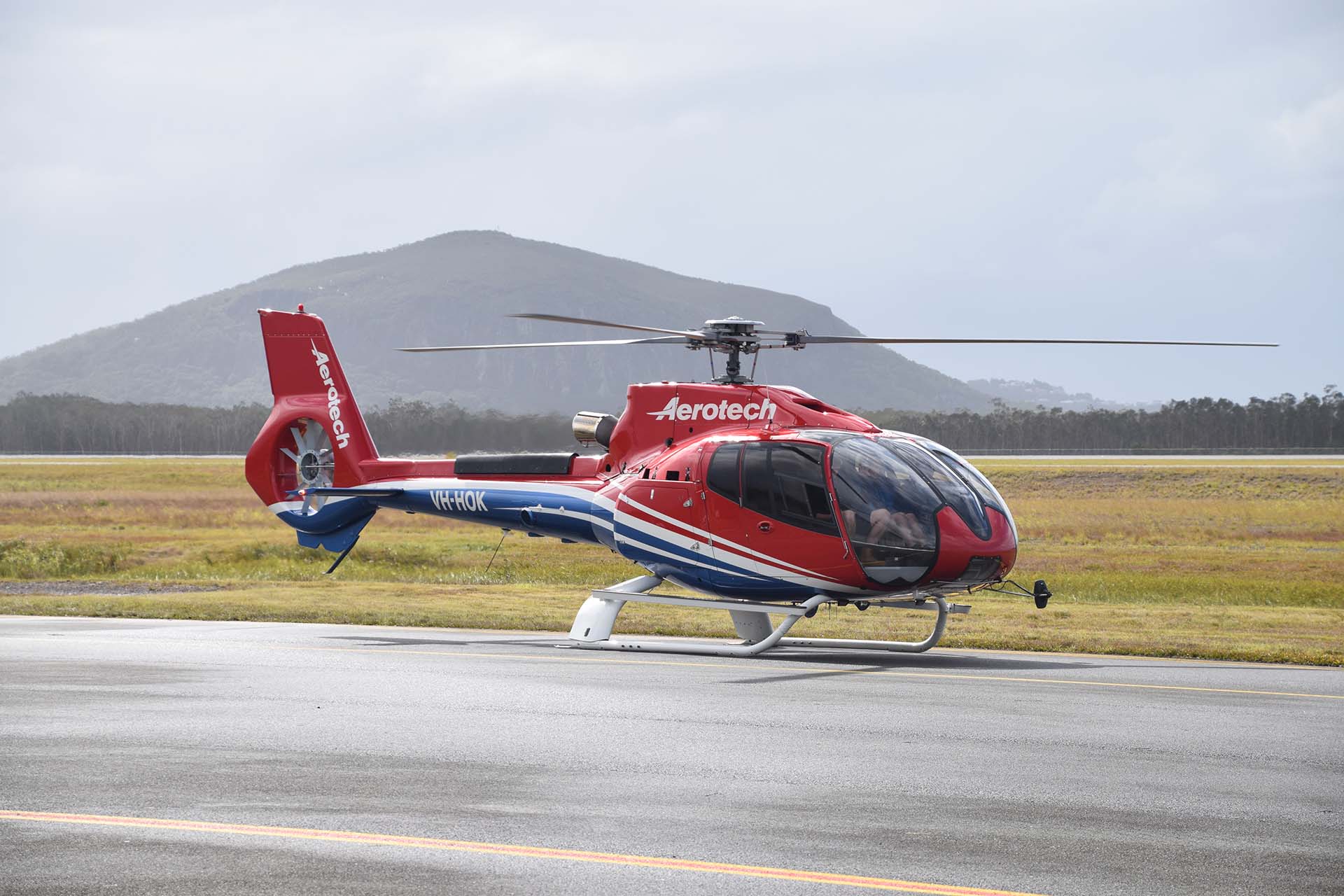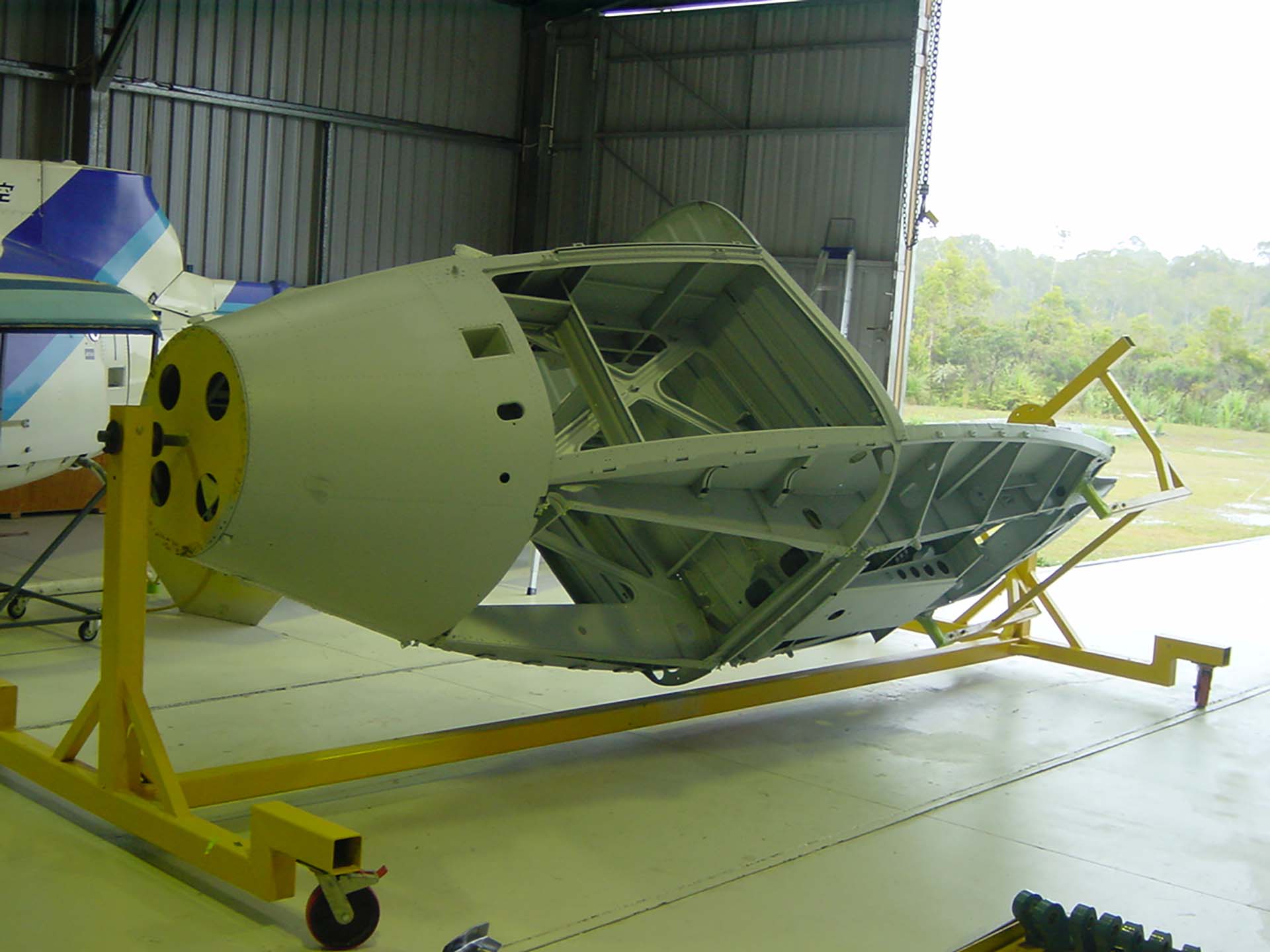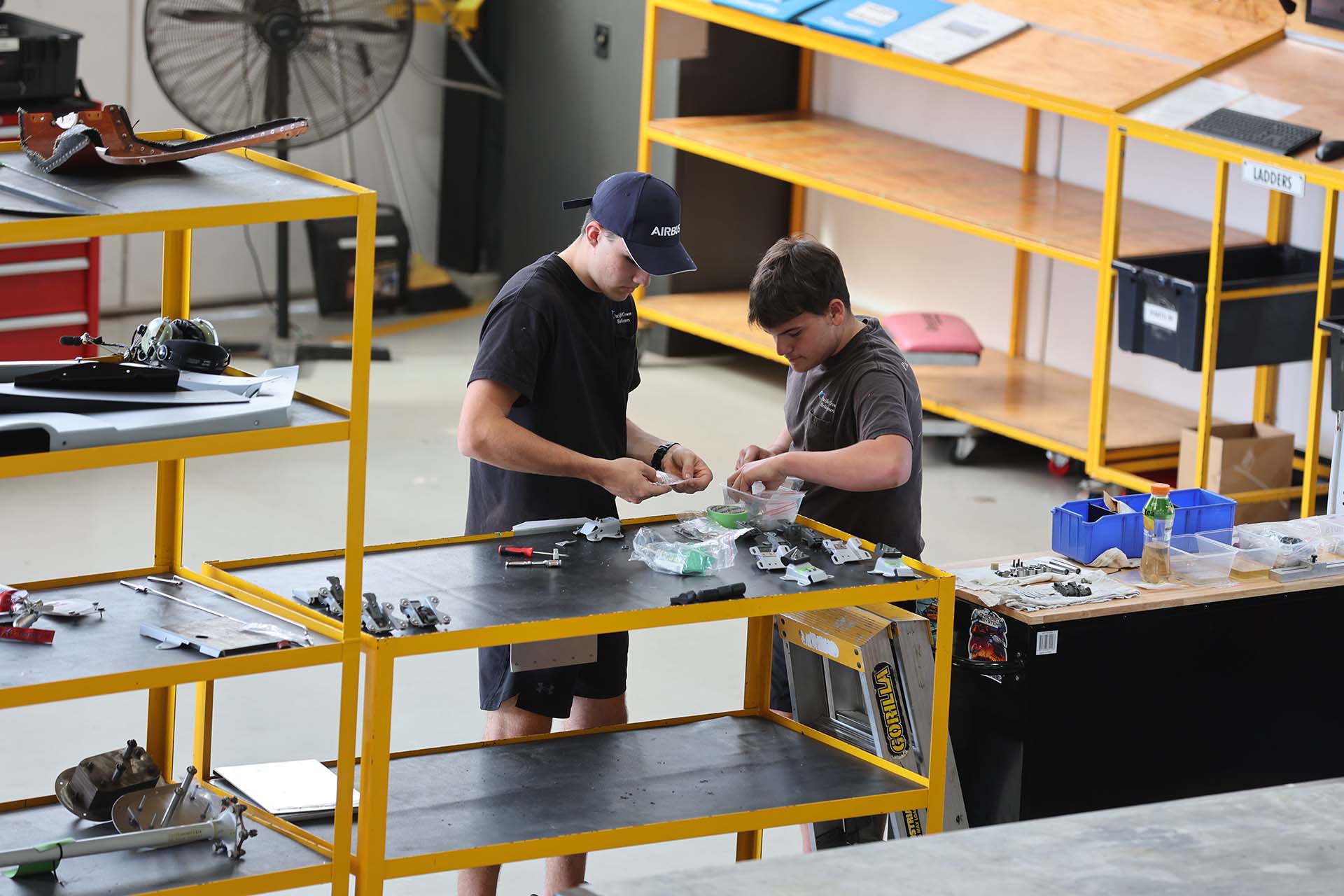While some companies endeavour to capture market share by catering to the broadest possible clientele, Pacific Crown Helicopters thrives
by concentrating on providing the fullest range of maintenance support to helicopters from a single manufacturer, with particular emphasis
on a single model series. General Manager Stefan Nageli spoke to Ned Dawson about the company’s operation.
Squirrel Start
Managing director Bill Haffner and Ian Simpson, past owner of Island Hoppers in Fiji, founded Pacific Crown Helicopters (PCH) together in 2003, with the specific intention of working primarily on the AS350 series of airframes. Since then, the majority of the CASA Part 145-approved company’s work has indeed been on the various iterations of the iconic and ubiquitous AS350/EC125/H125 Ecureuil, or ‘Squirrel’ series, but also encompasses most of Airbus Helicopters’ and Eurocopter’s models. Stefan Nageli started out as an aircraft maintenance engineer in 2000 and specialized in avionics. He joined PCH after several years of discussions with Haffner, who had always envisioned having all services under one roof and Nageli’s arrival added an avionics capability to the operation, which employed only four people at that time. Nageli worked eight years in various roles for PCH from 2006, attaining the position of operations manager before moving to a company in Papua New Guinea where he worked his way up as a chief engineer and subsequently engineering manager. He then returned to PCH as General Manager just over a year ago, in mid-2021, with the company now employing around thirty full-time staff.
“Bill and Ian just wanted to work on Squirrels as that was their background of experience in Fiji,” Nageli related. “They felt there was a strong market for it but wanted to do it a bit differently, working to the very highest standard and selling aircraft that had been completely refurbished, with everything zero-timed. At the time you could pick up a ‘B’ model for a couple of hundred grand, so it made a lot of sense to buy a few, turn them into ‘BA’s or ‘B2’s and turn a good profit.” On the maintenance side, Nageli noted that there were not many machines locally, but there were a substantial number around the major cities. “There are a lot of helicopters around Melbourne and Sydney, and we get customers bringing their aircraft all the way from Perth, and we get machines from all around Australia.”

Airport Location
PCH commenced operating from a leased hangar at Caloundra airport, and moved to the Enterprise Street industrial estate when the operation outgrew the original site. Nageli described the second location as ‘almost too big’ for the size of the company’s operation however, and at the end of 2017 the base moved to a new purpose-built facility with airside access at the Sunshine Coast airport. The airport location works well for clients with machines based at a distance, as they can arrive on a commercial domestic flight to check on progress, be accommodated locally and rent a car, none of which is feasible for a maintenance operation based in a remote out-of-town location. Also in its favour is the inherent noise tolerance of an airport environment, something that had occasionally been an issue when working out of the industrial estate. “We went back to this size to get back to the basics of what we do best, which is heavy maintenance, and combining that in with the paint shop and some upholstery work,” he said. The new facility incorporates a dedicated paint shop, engine shop, avionics shop and upholstery shop, alongside the two heavy maintenance bays and an incoming/outgoing bay for aircraft deliveries and receiving inspections. Administration and management facilities and a large, comprehensive stores department round out the facilities major components. Once a new project has arrived and been inspected, it is de-bladed and pushed into a maintenance bay for the work. When a project nears completion it is returned to the delivery bay to simplify egress for such necessary activity as ground runs.

3D Printing
Recently PCH acquired a large-scale commercial printer and is focusing on the application of 3D printing. The printer can print objects up to 1m by 0.5m by 0.5m, in a variety of either flexible or rigid plastics. Some useful applications include prototyping, making replacement parts and creating moulds – especially useful for work on helicopter interiors. The main benefits of 3D printing are its cost effectiveness and the shorter lead times it makes possible. Compared to conventional manufacturing methods, parts can be designed, printed, tested and any necessary adjustments made, all within a much shorter timeframe and while keeping the whole process in-house. In addition to running the 3D printer, PCH’s design engineer also handles all engineering approvals for all the company’s modification work, from design drawings to development, integration and installation.
An increasingly common job for PCH is converting AS350-BAs to B2s. Nageli explained that this was because engine manufacturer Safran wanted to get out of the BA’s earlier 1B version of the Arriel powerplant, and was offering substantial financial incentives to transition to the 1D1 variant of the AS350-B2. Many variant enhancements do not increase maximum performance limits but increase the altitude at which that performance is available. The BA to B2 conversion, however, increases the aircraft’s maximum gross weight and improves yaw control, so is a very attractive proposition, with the cost being much the same as a major engine overhaul on a 1B engine. An alternative also offered by PCH is installation of the 1D1 engine into a BA model under a local engineering order, improving altitude performance but retaining the BA designation and operating limitations.
The company carries out very little minor maintenance, such as 100hr and 150hr inspections, preferring to focus on the heavy maintenance tasks. Nageli commented that on the rare occasions they did such minor work, it simply highlighted that it was not their core business strength. “It’s like anything,” he said. “If you aren’t doing it all the time you’re a little slower at it and our guys are all used to doing the heavy maintenance role.” In 2015, PCH became an approved service centre for Safran helicopter engines and is the only manufacturer-approved service centre and distributor for the Arriel and Arrius engine lines in Australia. In 2019, Airbus Helicopters approved Pacific Crown Helicopters as a maintenance, repair and overhaul (MRO) partner and shortly thereafter as a completion centre for new Airbus helicopters sold into Australia.

Boats and the FAA
Visiting boat-borne aircraft requiring maintenance are able to be accommodated, as PCH has FAA licensed A&P engineers on staff that can work on ‘N’-registered aircraft, such as a visiting H145 undergoing relatively minor maintenance at the time of HeliOps’ visit. The aircraft will depart after the work is complete and return in November for an annual inspection, taking two or three-weeks. “That’s one of the reasons a lot of people with aircraft on their boats keep them on the ‘N’ register, because its so much easier to get the FAA license and maintain currency, with the large scope of work that you can do,” Nageli noted.
When the company started doing completions for Airbus Helicopters, the existing Airbus MROs (maintenance and repair organizations) did not have such in-house facilities as paint, avionics or upholstery. “That’s still a key difference to this day,” Nageli stressed. “If you buy a new or used helicopter you’ll find yourself bringing it in to one facility for paint, which might take four or five weeks. Then it’ll go to an avionics shop for another four weeks, and after that the upholstery might take a month or two. It’s so much easier to bring it here where we provide a turn-key solution for our customers.” Large, plush VIP-style upholstery projects are carried out using PCH’s in-house facility, as are smaller, less intricate jobs such as flooring and basic trimming. More often than not, Kangaroo leather is used as it is durable, lighter and cost effective. Nageli noted that PCH is looking at adding a second hangar to the facility, to increase capacity and enable larger jobs like jet interiors to be done entirely on-site.
The company’s projects can include new Airbus Helicopter completions or complete refurbishments with new interiors up to VVIP standard, new avionics and dash panels, mission-specific modifications and full paintjobs that can include custom airbrush artwork. For high end finishes, the paint shop applies a flow coat, comprising two to four clear coats over the base colour, rubbing back each clear coat to eliminate all surface imperfections and ‘orange peel’ effect. It is a time-consuming and labour-intensive process but results in an unparalleled mirror-smooth finish. The clear also preserves the paintwork and allows for refinishing when it degrades, while still protecting the base colour from the elements. Depending on the level of work required, aircraft undergoing such work can be in PCH’s facility for months, but other aircraft are moved out in just weeks, sold with just a new certificate of airworthiness and a thorough check-over, as customers just wanting a utility workhorse are seldom concerned about a fancy paintjob or plush interior.

Sales
Aircraft sales are a large part of the company’s business and comprise a substantial portion of maintenance and refurbishment work. Nageli commented that the B3 squirrel variant is currently a hot-ticket item. Because they fall into a price bracket that makes them a financially viable option for an operator wishing to upgrade from a B2, PCH can buy B3s on spec’, knowing they will be readily saleable. “A typical scenario for us is that a customer will come to us and say ‘I’ve got a contract and I need this particular helicopter, here’s what I need on it, and I need it by this date.’ So our team will go out and find the aircraft. We’ll sit down and see if it’s suitable, considering its condition, hours, component times and modifications. If it’s the right machine we’ll buy it, do an import C of A, get it on the Australian register, bring it here and fit it out for the customer, do a turn-key solution and deliver it to them.” Although Covid-related travel restrictions created some challenges on the sales side, PCH has been able to leverage its contacts worldwide to arrange for the right people to carry out inspections and oversee packing and shipping to Australia. “While we prefer turn-key deliveries, we do have customers who are looking for a quick turn-around and we simply handle the import, C of A and such minor upgrades as ADSB-compliant transponders, to get it out the door quickly,” Nageli added.
Holding Parts
The current global shipping challenges have impacted heavily on parts availability, lead times and delivery times but fortunately for PCH, the company has always held a very large and comprehensive stock of spare parts. “That’s one of the things that has always made us more popular,” Nageli claimed as he noted that PCH has seen a large increase in overall lead times from its suppliers. “That can create problems for customers who want a specific piece of equipment because we cannot stock everything.” Even so, PCH still holds well over $2million in parts stock, including not just new parts but also exchange components, primarily for the AS350 platform.

Future Ideas
So how is PCH looking to the future? A challenge common throughout the industry is difficulty in finding and retaining good engineers, and PCH is experiencing that also. The engine shop is currently level one and two, and the arrival of a newly hired ex-Safran engineer from overseas with level three and four experience will help PCH to rapidly expand the amount of engine work and capabilities it can offer.
One area that Nageli would like to see in Pacific Crown’s future is aircraft leasing. He envisages a fleet of leased aircraft with a selection of quickly swappable major modifications and mission suites, expounding, “Helicopters are multi-mission tools and we have a lot of ideas about how to make big modifications easier to swap between aircraft.”
Aircraft sales are a major revenue earner for the business and will remain an important focus for the operation. It seems that for the most part, Pacific Crown Helicopters will simply continue to do what it has proved extremely competent at; concentrating on high-end maintenance, sales and support efforts for a selected range of specific airframes with which it is exceptionally familiar.
 HOME
HOME


